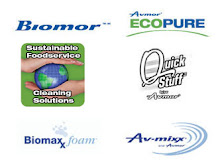While some health care facilities have carpeting in lobbies and other common areas, the flooring installed in these types of locations usually is a hard surface, such as vinyl composition tile or terrazzo. Hard surface flooring is selected for a very practical reason: spills of all kinds can be cleaned up fairly easily and quickly with little or no damage to the floor.
However, this should not lead health care administrators or the cleaning professionals they work with to believe that hard surface flooring is essentially impenetrable and easy to maintain. Especially if a facility strives to maintain a high-gloss shine, floors must be properly cleaned and maintained. While a number of problems can arise, particularly when refinishing floors, most issues can be avoided or easily corrected if proper measures are taken.
Below are some of the more common floor care problems that arise in health care environments along with ways to address them.
- The floor appears soiled or lacks shine after mopping or refinishing. A number of issues can cause this scenario, but at the top of the list is the cleanliness of the mops used to maintain the floors and apply finish. Are the mops clean? Before performing many floor care tasks, such as refinishing a floor, it is best to select new, unused mops for the job. Also, the mops used to clean and rinse the floor should not be used to apply finish; keep finishing mops separate from cleaning mops.
- The floor shows no gloss or shine. When clean mops, buckets, and solution are used for refinishing work but the floor still does not shine, it may simply be that not enough finish was applied. In most cases, the gloss shine does not necessarily develop until the third coat of finish is applied. In a health care facility, applying four to even six coats of finish is advisable.
- The finish does not adhere properly to the floor. Environmental conditions can impact how well finish adheres to the floor. In most cases, it is best to finish floors when it is not too cold, hot, or humid. Heat, cold, and humidity can impact how well finish adheres to the floor. This also applies to the storage of floor care chemicals and finishes. They should be stored in areas that have moderate temperatures throughout the year.
- Powder forms over the floor. Sometimes the floor’s finish actually starts to disintegrate shortly after it is applied. A fine, light-colored powder forms over the floor, referred to as powdering. There can be a variety of reasons this happens. Is the floor brand new? Some new floors have a protective coating to shield the surface during transportation and delivery. This coating should be removed first before finish is applied. In some cases, the wrong finish is applied. There are essentially two types of floor machines: low speed and high speed, also known as burnishers. If a low speed finish has been applied to the floor, yet a high speed machine is used to burnish the floor, it can cause the finish to disintegrate, causing powdering.
- Excessive scuffing appears on the floor. If you witness more scuff marks than usual shortly after a floor has been refinished, it can indicate that the coats of finish applied are too thick. Each coat should be thin with the goal of applying several thin coats of finish. As referenced earlier, four to six coats of finish should provide adequate floor protection and prevent excessive scuffing in a health care facility.
Read full article:






